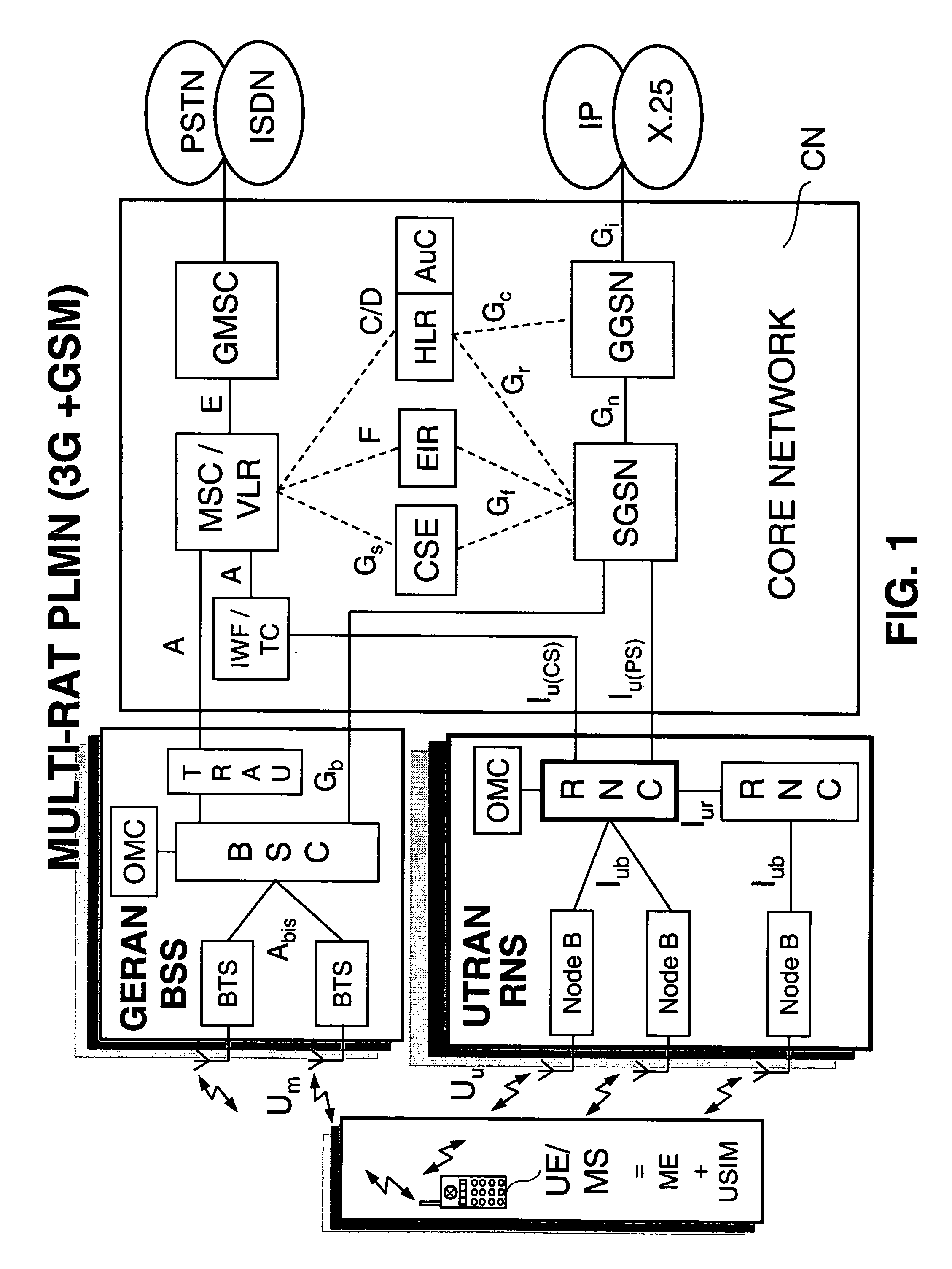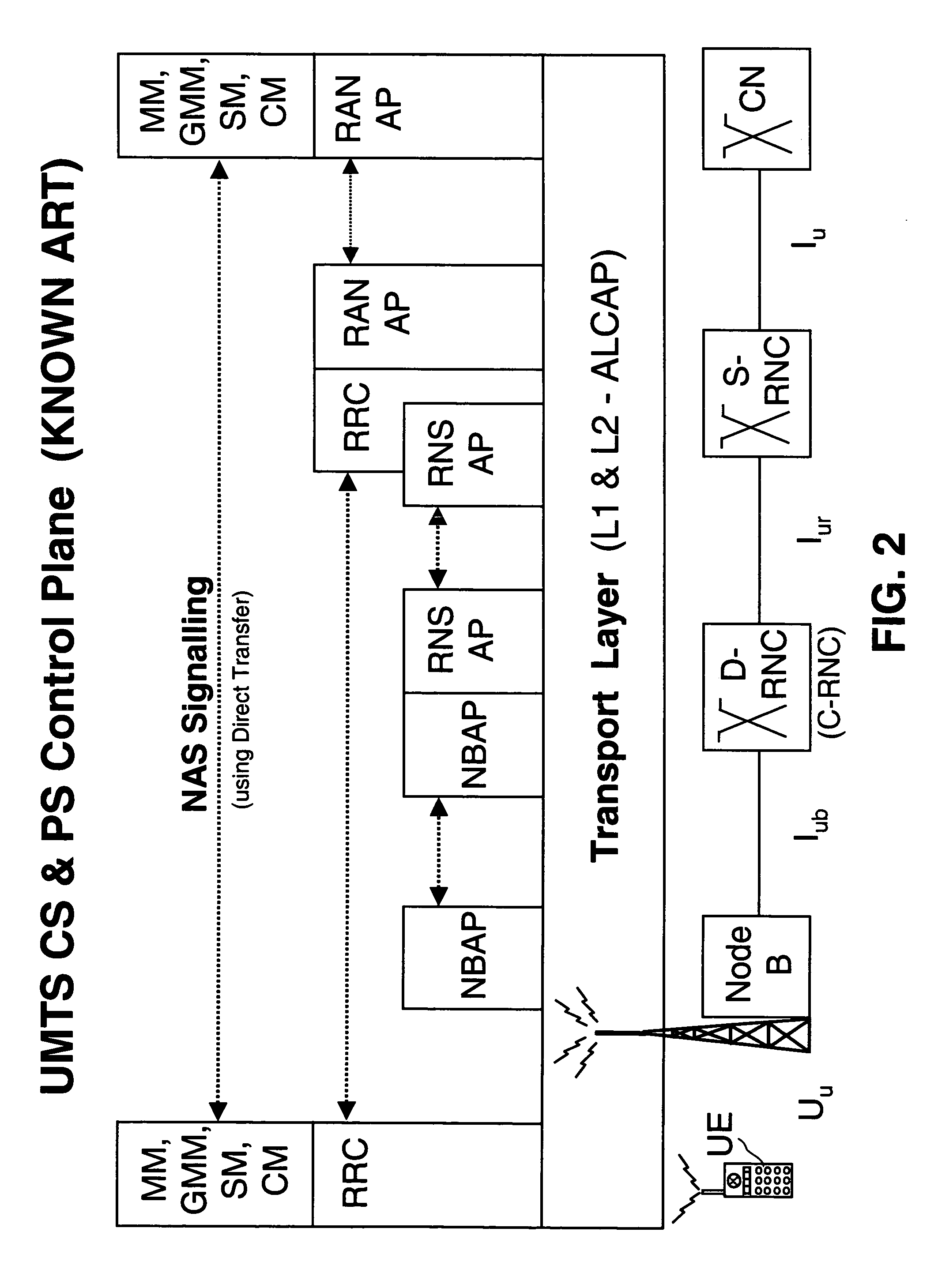Common radio resource management method in a multi-RAT cellular telephone network
a radio resource management and cellular telephone network technology, applied in the field of public land mobile networks, can solve the problems of limiting the subscriber to the negotiated peak data rate, unable to guarantee the achievement or sustained of the peak rate, and unable to solve the complexity of the calculation and setting of the rel5, so as to avoid the resulting interoperability problems
- Summary
- Abstract
- Description
- Claims
- Application Information
AI Technical Summary
Benefits of technology
Problems solved by technology
Method used
Image
Examples
Embodiment Construction
The following definitions of Bearer Services apply: Conversational Bearer Service: it refers to RABs whose traffic class is defined as Conversational, or GERAN Speech bearer services, or GERAN CS Data bearer services, or GPRS / EGPRS PS Data bearer services with comparable characteristics (priority, guaranteed bandwidth, delay) to RABs whose traffic class is defined as Conversational.
Streaming Bearer Service: it refers to RABs whose traffic class is defined as Streaming, or GPRS / EGPRS PS Data bearer services with comparable characteristics (priority, guaranteed bandwidth, delay) to RABs whose traffic class is defined as Streaming.
Interactive Bearer Service: it refers to RABs whose traffic class is defined as Interactive, or GPRS / EGPRS PS Data bearer services with comparable characteristics (priority, guaranteed bandwidth, delay) to RABs whose traffic class is defined as Interactive.
Background Bearer Service: it refers to RABs whose traffic class is defined as Background, or GP...
PUM
 Login to View More
Login to View More Abstract
Description
Claims
Application Information
 Login to View More
Login to View More - R&D
- Intellectual Property
- Life Sciences
- Materials
- Tech Scout
- Unparalleled Data Quality
- Higher Quality Content
- 60% Fewer Hallucinations
Browse by: Latest US Patents, China's latest patents, Technical Efficacy Thesaurus, Application Domain, Technology Topic, Popular Technical Reports.
© 2025 PatSnap. All rights reserved.Legal|Privacy policy|Modern Slavery Act Transparency Statement|Sitemap|About US| Contact US: help@patsnap.com



